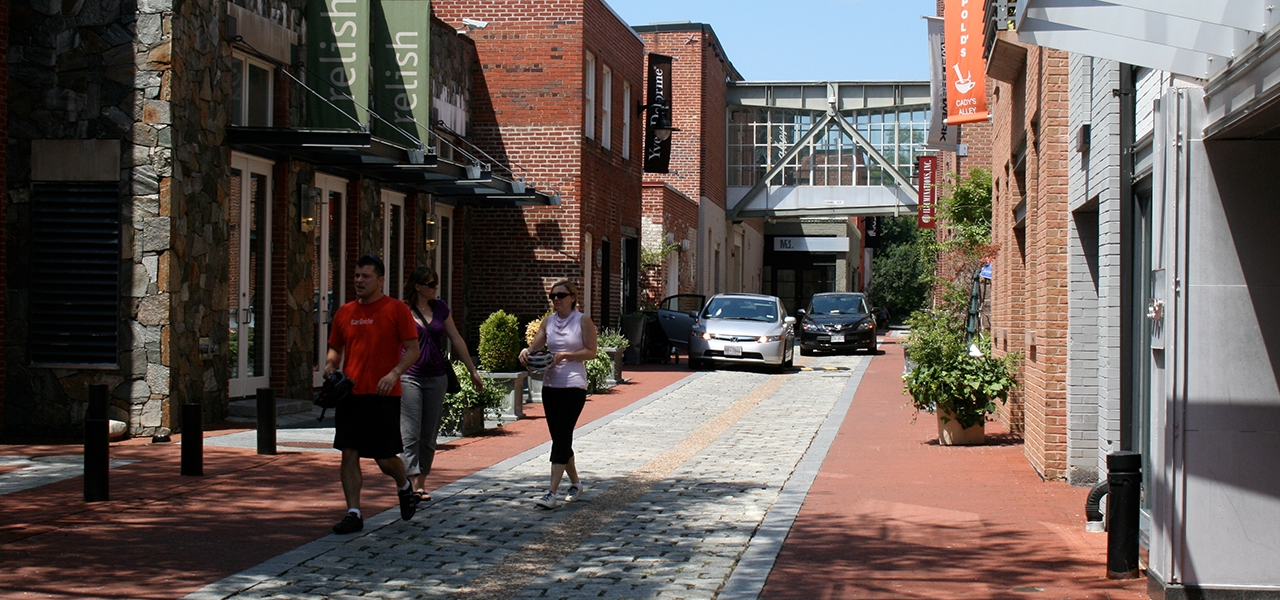 “They’re designed to allow cars but they’re not designed for cars.” We’re talking about curbless streets, or rather woonerf, for the residential version popular throughout the Netherlands. That’s the definition given by the lead architect behind the biggest upcoming development project in Washington DC, a city that’s already well known for its walkable urbanism. The architect incorporated the curbless design in his project to “intimidate” drivers, turning the road into a shared space for pedestrians, cyclists and motor vehicles, both stationary or moving. At the same time, public space becomes safer, more alive and shops are more easily accessible.
“They’re designed to allow cars but they’re not designed for cars.” We’re talking about curbless streets, or rather woonerf, for the residential version popular throughout the Netherlands. That’s the definition given by the lead architect behind the biggest upcoming development project in Washington DC, a city that’s already well known for its walkable urbanism. The architect incorporated the curbless design in his project to “intimidate” drivers, turning the road into a shared space for pedestrians, cyclists and motor vehicles, both stationary or moving. At the same time, public space becomes safer, more alive and shops are more easily accessible.
DC isn’t the only city to see its potential. Philadelphia has also opted for this shared space model for some of its residential zones. Up until recently, this trend was mainly found in Europe. However, over the past few years, the curbless road has made its way across the Atlantic, not only in Washington DC, but in San Francisco, Seattle and now “Philly” too. For the state of Pennsylvania, going curbless is even included in both their Vision Zero plan, which is aiming for zero traffic-related deaths, and their global Philadelphia2035 program, which is launching the city towards an environmentally and economically sustainable future. The plan is especially compatible with the city’s narrow streets.
Published in January 2018, the extensive report entitled “Evaluating curbless and shared space concepts for use on city of Philadelphia streets” concludes that the transformation from “a street you go through” to “one you go to” implies numerous benefits. These includes safety (reduced speed and drivers paying more attention), economic (increased property values and decreased vacancy), quality of life (access to open space, improved aesthetic), and mobility advantages. For the latter, sharing the pavement reduces delays (less vehicle wait time, pedestrians also wait less time), increases interaction between modes, and particularly reduces traffic, especially by reducing unnecessary throughput. All it takes are a few changes here and there to turn a road shy from sharing into a curbless street. Simply add a pavement that’s entirely pedestrianized, or roads (even without a curb) that delineate the space more traditionally with markings on the ground, particular paving or signage.
The archetype of “livable” or “shared” streets has been around in urban design in Germany, Denmark and even Israel since the noughties. However, the curbless model responds to an additional, more specific need. That is, to revitalize under-used spaces, usually small streets in the city center or residential strips, without much upheaval in terms of infrastructure. According to the report, the American roads most likely remove their sidewalks are those who already welcome a low volume of motorized vehicles, but are those beset by safety and accessibility problems. Other common characteristics (but less universal) observed include: features linked to the functional nature of the neighborhood (presence of school-aged children, proximity to transit routes, supports commercial uses), but also the economic opportunities, such as the possibility to establish partnerships with the private sector. Therefore, 100% curb-free city centers are not on the cards for all cities throughout the world. However, the curbless method does remain an additional resource in every urban designer’s tool box – one that’s useful depending on the situation.


